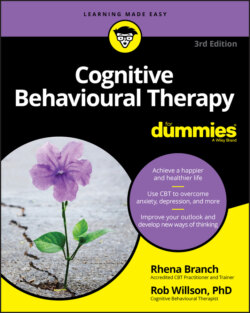Читать книгу Cognitive Behavioural Therapy For Dummies - Rob Willson - Страница 57
Training in Task Concentration
ОглавлениеBecoming adept at redirecting your attention away from yourself (this includes your bodily sensations, thoughts and mental images), in certain situations, is the essence of task concentration. Rather than thinking about yourself, you focus your attention towards your external environment and what you’re doing.
Task concentration involves paying less attention to what’s going on inside of you and more attention to what’s happening outside of you. You focus less on how well you are doing – for example, when giving a speech – and more on what you are doing. The task gets the bulk of your attention.
Task concentration can be particularly useful in situations that trigger anxiety in you. Task concentration can help you to counterbalance your tendency to focus on threats and on yourself when you feel anxious.
As you begin to practise task concentration, break down the process into two rehearsal arenas – just as when learning to drive you begin on quiet roads and eventually advance on to busier roads.
The two rehearsal arenas are as follows:
Non-threatening situations: Here, you typically experience little or no anxiety. For example, if you have social phobia, you may feel a little anxious walking through a park, travelling on a very quiet train or socialising with family members and close friends.
More challenging situations: Here, you may experience moderate to severe anxiety. More challenging situations may include shopping in a busy grocery store, travelling on a train during rush hour or attending a party with many guests whom you may not know.
Typically, you gradually progress from non-threatening situations to more challenging situations as you practise and develop greater skill.
After you’ve practised redirecting your attention in situations you regard as relatively non-threatening, you can move on to using the techniques in increasingly challenging situations.
